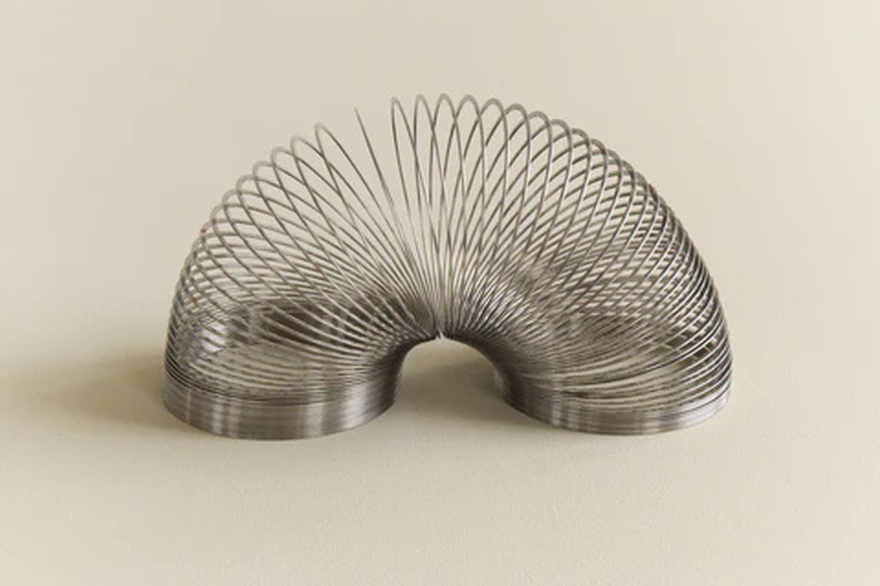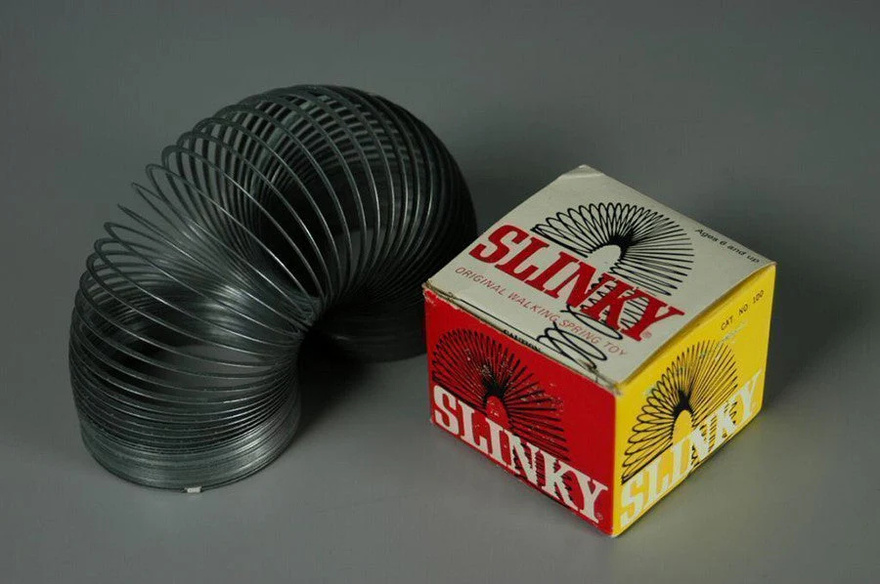Imagine a simple metal spring that can walk down stairs, flip end over end, and bring endless joy to kids and adults alike. That’s the Slinky, an iconic toy that has been captivating hearts since its invention in 1943 by Richard James, a naval engineer from the United States.
The original Slinky was made from coiled steel and had a mesmerizing ability to move with a life of its own. From the moment it hit store shelves, it became an instant classic, weaving its way into the fabric of American pop culture. Fast forward to today, and the Vintage Slinky remains a cherished collectible and a nostalgic reminder of simpler times.
What Makes a Slinky Vintage?
When people talk about a Vintage Slinky, they’re usually referring to the classic models produced from the 1940s through the 1960s. These were typically made from stainless steel and had that signature metallic sheen that made them visually striking.
Key Characteristics of a Vintage Slinky:
Material: Usually made from durable, high-quality stainless steel. Later versions introduced plastic Slinkys in a variety of colors.
Design: A long, coiled spring with excellent elasticity, allowing it to perform the classic “walking” motion down stairs.
Color: The original versions were primarily silver, while later models incorporated rainbow colors or metallic finishes.
Rarity and Value: The earliest Slinkys, particularly those still in their original packaging, are highly sought after by collectors and can fetch significant prices.
Video: CLASSIC TV COMMERCIAL – 1980s – SLINKY
Why Do People Love Vintage Slinky Toys?
The Vintage Slinky is more than just a toy; it’s a piece of nostalgia. Here’s why it remains beloved:
1. Nostalgia Factor:
For many people, owning a Slinky is like holding a piece of their childhood. The metallic clinking sound as it moves, the way it seemingly comes to life—all these elements transport adults back to a simpler, carefree time.
2. Built to Last:
Unlike modern plastic versions, vintage metal Slinkys were made to endure rough play. Their sturdy build and resilient material meant they could withstand countless tumbles down the stairs without losing their shape.
3. Collectible Value:
Original Slinkys from the 1940s and 1950s, especially those in mint condition or with original packaging, are highly valuable to collectors. Some rare versions, like limited edition releases, can be worth hundreds of dollars.
4. Timeless Entertainment:
Despite the advancement of toys, the simple pleasure of watching a Slinky flip end over end never gets old. It’s a reminder that not all entertainment needs to be high-tech—sometimes, simple physics is enough to fascinate.
How to Identify a Genuine Vintage Slinky

Check the Material:
A vintage Slinky will most likely be made of metal, not plastic. The original ones are sturdy and have a distinctly metallic shine.
Inspect the Packaging:
Older Slinkys often came in cardboard boxes with classic branding. Check for logos or text that indicate the James Industries manufacturer, as this company was the original producer.
Look for Patina:
Over time, vintage metal Slinkys may develop a slight patina or discoloration. This natural aging process can be a good indicator of authenticity.
Test Its Movement:
Vintage Slinkys have a heavier feel and a more fluid motion compared to modern plastic versions. When dropped from a step, they should “walk” smoothly down the stairs.
The Science Behind the Magic: Why Does a Slinky Walk?
The reason why a Slinky moves so gracefully down a flight of stairs lies in basic physics. It’s all about gravity, tension, and inertia.
When the Slinky’s top is released, gravity pulls it downward while the stored energy in the coils creates forward momentum. As each coil collapses into the next, the toy “walks” down one step at a time. This fascinating motion made it not just a toy, but also a popular demonstration tool in physics classes.
The Multifaceted Uses of the Vintage Slinky

Science Demonstrations: Teachers use Slinkys to illustrate wave patterns and kinetic energy.
Therapeutic Tool: The rhythmic movement can be soothing and is sometimes used in occupational therapy.
Home Decor: Some vintage enthusiasts use old Slinkys as quirky, metallic sculptures or tabletop decorations.
Musical Instrument: Believe it or not, stretching a metal Slinky and striking it can create a sound similar to a spring reverb—used in experimental music.
Modern Slinkys vs. Vintage: Why the Old Ones Are Better

For true Slinky lovers, nothing beats the classic feel of a vintage metal Slinky, with its robust construction and smooth movement. The tactile experience of holding a metal Slinky just feels more authentic.
Why Vintage Slinkys Still Matter Today
In a world dominated by digital gadgets and flashy electronics, the vintage Slinky stands as a reminder that simple pleasures never go out of style. It’s not just a toy—it’s a cultural icon, a slice of mid-20th-century Americana, and a symbol of creativity meeting simplicity.
Whether you’re a collector or just someone who remembers the joy of watching it “walk” down the stairs, the vintage Slinky will always hold a special place in the hearts of those who grew up with it.
The Enduring Legacy of the Vintage Slinky
Video: Slinky Commercial 1962
As long as there are stairs to climb and curious minds to captivate, the Slinky will continue to bounce its way through our lives. It’s more than a piece of coiled metal—it’s a memory, a toy, and a testament to how a simple invention can become a timeless classic.
If you ever find a vintage Slinky, hold onto it. You’re not just holding a toy—you’re holding a piece of history.





